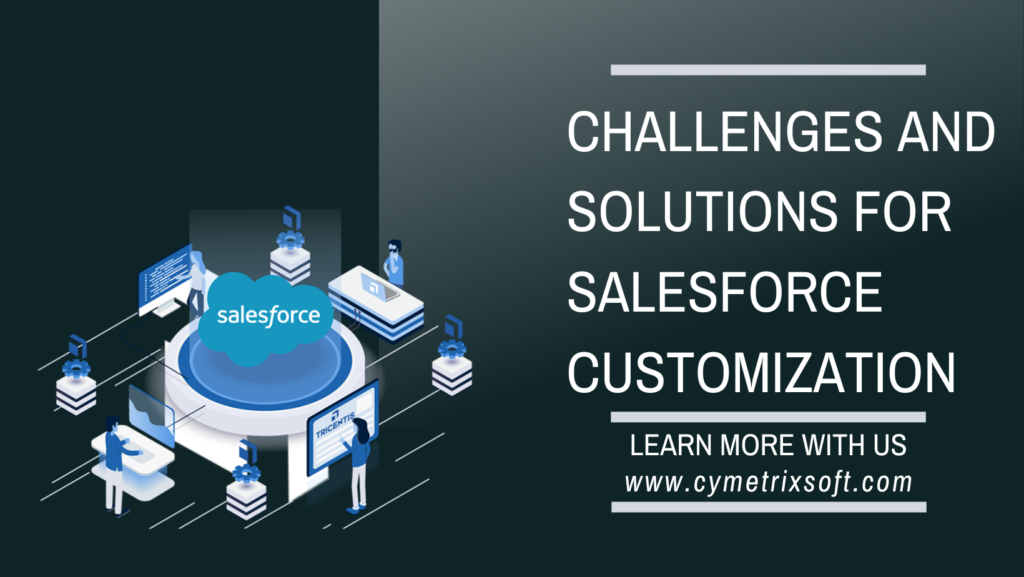
Introduction: Salesforce Customisation
Are you looking to boost your business’s performance and streamline your operations? According to a survey by Salesforce, companies that leverage salesforce observes a 25% savings in IT costs and a 26% increase in employee productivity using salesforce. However, one of the most effective ways to achieve this is through Salesforce customization.
Customization allows you to tailor your Salesforce to suit your unique business needs and preferences, ensuring that your CRM is optimized to help you achieve your goals. However, with so many customization options available it can be overwhelming to figure out a plan or strategy.
In this blog, we’ll explore tips, best practices, and solutions for Salesforce customization. Whether you’re a seasoned Salesforce user or just starting, you will be able to learn how to make the most of this powerful practice and take your business to the next level. So let’s dive in!
Tips and Tricks for Salesforce Customization
So, now that you understand the significance of customizing your Salesforce CRM, let us dive into some tips and tricks to help you get started.
Understand Your Business Requirements
Before making any changes, it’s essential to have a clear understanding of your business need. What are your goals? How to achieve them? What processes do you need to streamline? What information do you need to monitor? Moreover, by answering these questions, you can ensure that your customizations align with your business requirements.
Create Custom Fields with Salesforce customization
Custom fields allow you to track and store additional information beyond the standard fields provided by Salesforce. By creating custom fields, you can ensure that your Salesforce data accurately reflects your business operations. Be sure to organize your fields logically and consistently for easy navigation.
Customize Page Layouts and Record Types
Page layouts and record types determine how information is supposed to be displayed on Salesforce. Customizing these elements can improve user experience, increase efficiency, and streamline processes. So, make sure to consider user roles and access levels when creating customized page layouts and record types.
Develop Custom Apps and Components
Custom apps and components allow you to extend Salesforce’s functionality beyond the standard features. That is especially handy if your company has specific needs that Salesforce does not meet out of the box. However, bear in mind that creating and maintaining these applications and components requires technical expertise.
Implement Automation and Workflows
Automation and workflows can save time and reduce errors by automating repetitive tasks and standardizing processes. Further, by leveraging automation and workflows, you can increase efficiency and ensure consistency across your team’s operations.
Integrate Third-Party Apps
Salesforce integrates with thousands of third-party apps, providing additional functionality and capabilities. Furthermore, by integrating third-party apps, you can extend your Salesforce experience and automate processes across multiple platforms.

Best Practices for Salesforce Customization
When it comes to customizing your Salesforce CRM, it’s essential to follow best practices to ensure that your customizations are effective and sustainable. Here are some best practices to keep in mind:
- Prioritize Simplicity and Efficiency: While it’s tempting to customize every aspect of your Salesforce CRM, doing so can lead to a cluttered and confusing interface. Instead, prioritize simplicity and efficiency. Focus on customizations that provide real value and streamline processes.
- Stay Organized with Documentation: Documentation is significant to maintaining a clear and organized Salesforce CRM. Keep track of all customizations, including field definitions, page layouts, and workflows, in a central location. That makes it easy to manage changes and ensures that your team works from the same playbook.
- Keep an Eye on Scalability: Your business is constantly evolving, and your Salesforce CRM needs to be able to evolve with it. When customizing Salesforce, consider scalability. Will your customizations be able to grow and adapt to your business’s changing needs?
- Test Thoroughly Before Implementing: Testing for any changes is a critical step in the customization process. Before implementing any changes, thoroughly test your customizations to ensure that they work as expected and don’t have unintended consequences. That can save time and prevent headaches down the road.
- Train Your Team on Customizations: Customizations are only effective if your team knows how to use them. Be sure to provide comprehensive training on any customizations you implement. It will ensure that your team is using Salesforce effectively and efficiently.

Challenges and Solutions for Salesforce Customization
Customizing Salesforce can provide numerous benefits for businesses, but it’s important to note that it can also bring forth several challenges that should not be overlooked. Here are some common challenges and solutions for Salesforce customization:
Over-Customization of Salesforce
The primary challenge of Salesforce customization is the risk of over-customization. That happens when you customize Salesforce to the point where it becomes difficult to manage and maintain. Too many customizations can lead to a cluttered interface, slow performance, and difficulty integrating with other systems.
Solution: To avoid over-customization, focus on customizations that provide real value and streamline processes. Regularly review your customizations and remove any that are no longer needed.
Lack of Technical Expertise
Customizing Salesforce requires technical expertise, which can be challenging for businesses without an in-house IT department. However, without the right expertise, customizations can be time-consuming, ineffective, and potentially harmful.
Solution: You should consider hiring a Salesforce consultant or developer to help with your customizations. Alternatively, invest in training for your team to build the necessary technical skills.
Managing Data Privacy and Security
Customizations can potentially compromise the security of your Salesforce data. Without proper security measures in place, customizations can create vulnerabilities that hackers can exploit.
Solution: Ensure that you follow Salesforce’s security best practices when implementing customizations. That includes setting up role-based access controls, enabling two-factor authentication, and regularly reviewing user permissions.
Ensuring Compatibility with Future Updates
Salesforce releases regular updates and new features, which can potentially break customizations that were built for older versions of the platform. That can create compatibility issues and require additional development work.
Solution: Test your customizations thoroughly before implementing them and ensure that they are compatible with the latest version of Salesforce. To keep your modifications compatible, evaluate them frequently and implement any necessary upgrades.
Collaborating with Other Departments
Customizing Salesforce requires collaboration across departments, which can be challenging if departments have different needs and priorities.
Solution: Foster open communication and collaboration across departments when planning and implementing customizations. Thus, ensure that all stakeholders have a clear understanding of the business requirements and how the customizations will benefit them.
If you have found this blog to be informative and helpful, you can also learn more about other salesforce services such as salesforce data migration by reading our blog.
Conclusion
Salesforce customization is a powerful practice that can transform the way your business operates. By tailoring Salesforce to meet your specific business needs, you can increase efficiency, streamline processes, and enhance customer satisfaction.
At Cymetrix, we understand the importance of Salesforce customization for businesses of all sizes. Whether you’re a small startup or a large enterprise, we can help you unleash the full potential of Salesforce.
Furthermore, with our expert consulting services, we can guide you through the customization process. Thereafter, we will ensure that your customizations align with your business objectives. Our team of certified Salesforce consultants has the technical expertise and experience to handle even the most complex customizations.
Don’t wait any longer to leverage Salesforce customization. Contact us today to learn more about our services and how we can help you transform your business with Salesforce.
